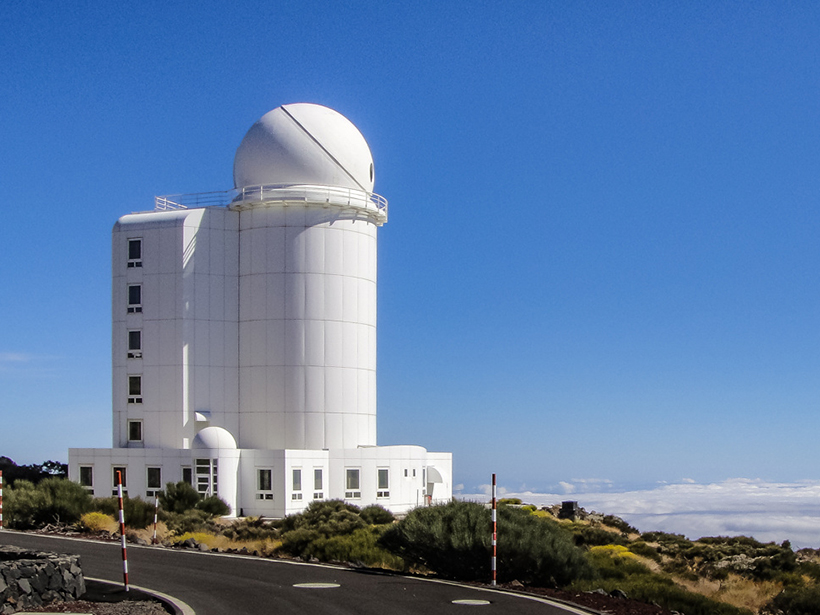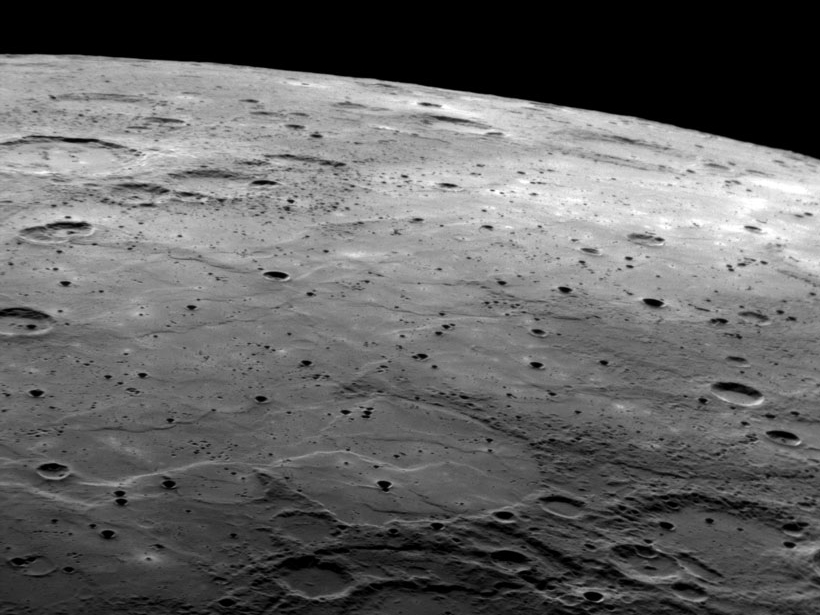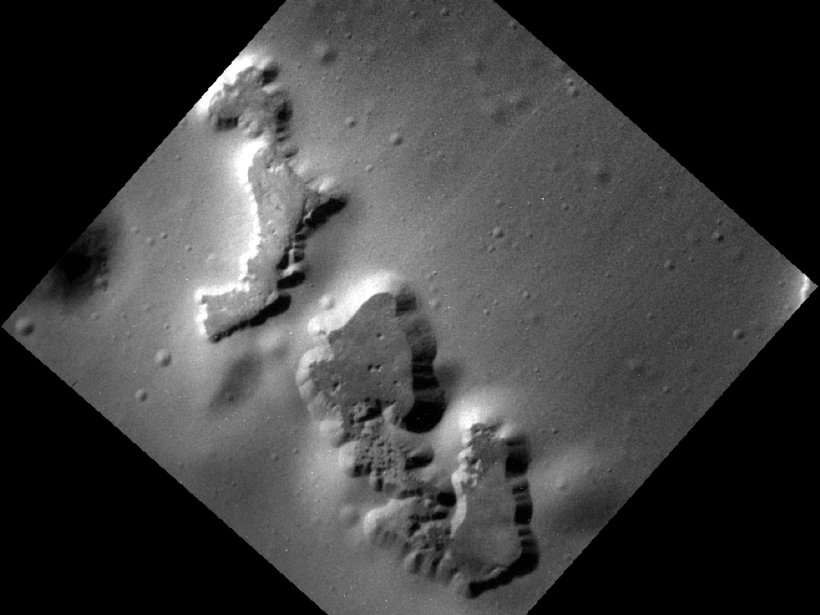An analysis suggests that craters degrade faster on Mercury than the Moon, raising questions about landscape evolution on different planetary bodies.
Mercury
Observing Mercury’s Brilliant Flares from Earth
Researchers make the first short-term observation of sodium flares in Mercury’s exosphere.
How Quickly Is Mercury’s Surface Evolving?
New measurements of impact craters on Mercury’s smooth plains suggest that the topography of the solar system’s innermost planet is changing at twice the rate of landforms on the Moon.
Unprecedented Views of Mercury Constrain Hollow Formation
The consistently shallow depths of the depressions scattered across Mercury's surface suggest their morphology is not determined by the thickness of a volatile-rich outer layer.
Demystifying Mercury "Hollows"
Spectral data from NASA's MESSENGER spacecraft indicate that the properties of the depressions on Mercury's surface can vary within a single crater and that these differences may correlate to age.
Mercury's Magnetosphere Model Gets Retro Makeover
New observations from Mercury revive a once-abandoned model for its magnetic field, resulting in a new profile that better fits the data.
Mercury's Secrets Revealed by Soon-to-Crash Spacecraft
From finding water ice on Mercury to discovering magnetic field lines cutting through the planet, NASA's MESSENGER spacecraft has spent its lifetime unveiling Mercury's secrets.
Scientists Watch Solar Winds Blast Mercury's Magnetic Field
A NASA team used the MESSENGER spacecraft to analyze Mercury's magnetosphere during intense solar wind pressure.
Large-Scale Electric Currents May Flow Through Mercury’s Crust
NASA's MESSENGER spacecraft discovered electric currents in Mercury's magnetosphere directed toward and away from the planet. Do the currents reach the planet? If so, where do they go?









